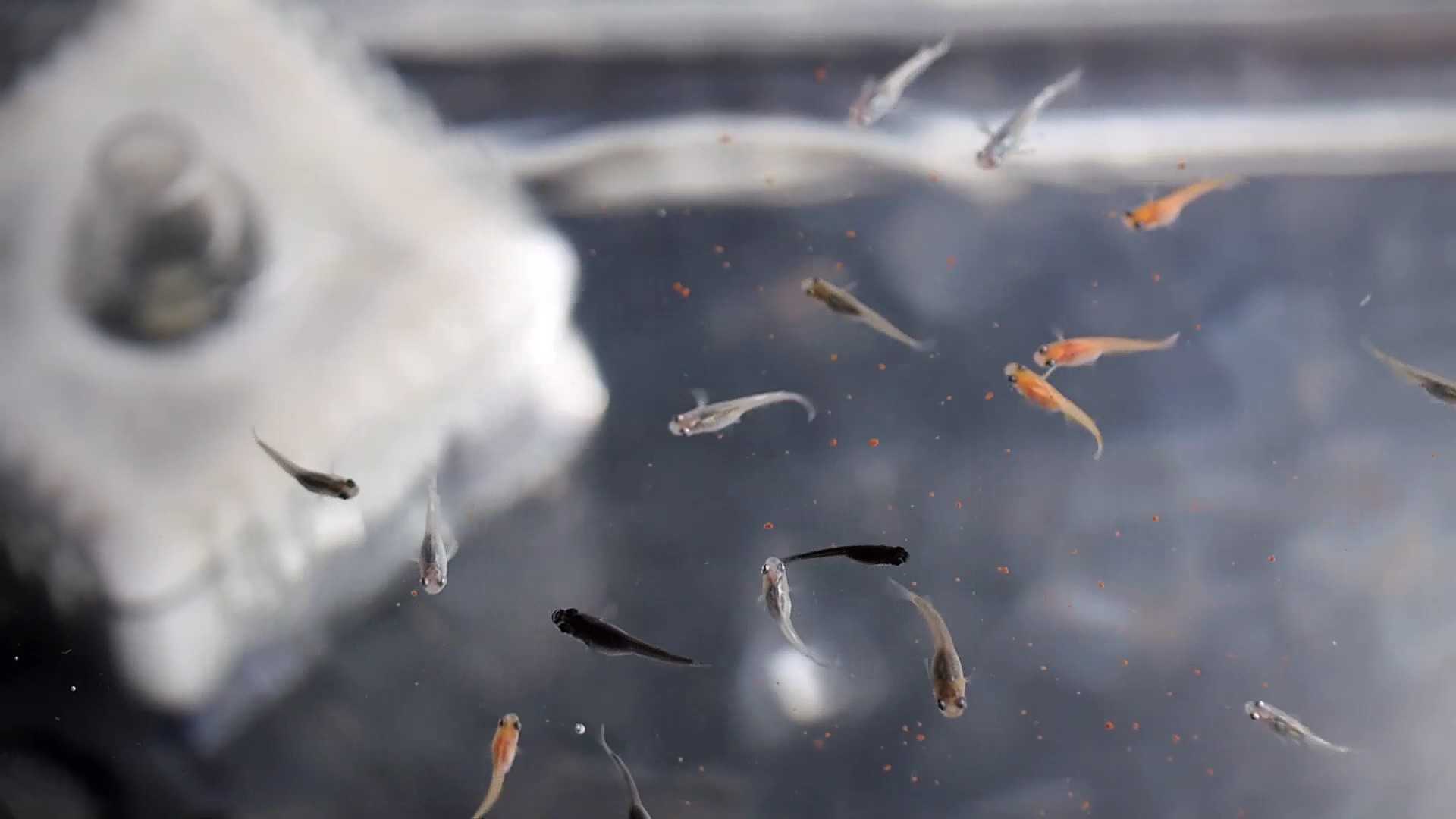Having trouble keeping killifish fry?

When killifish are growing well, the female will probably have eggs attached to her belly every day from around May to fall.
However, there are many people who lay eggs but have never seen the fry, or who have had trouble raising the fry even after they are born.
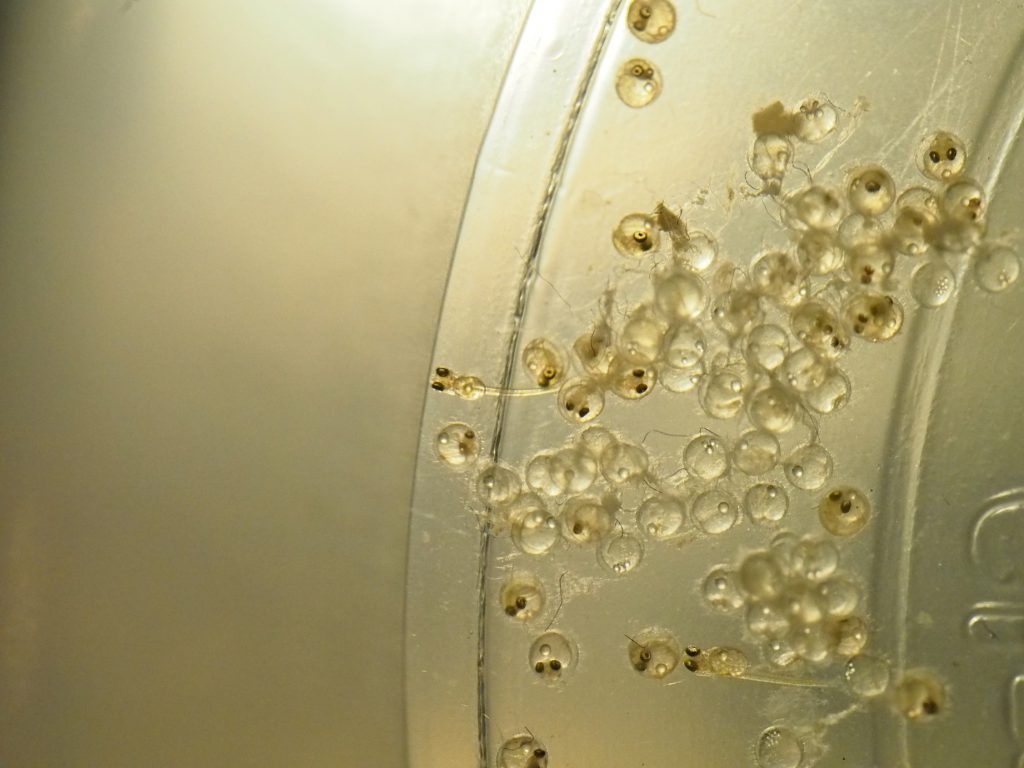
On this page, you will learn how to raise fry after the eggs are born? What to feed them? and more.
Please note that this article focuses on keeping killifish in indoor aquariums, which are becoming more and more common these days. Please note that most of the information in this article is the same for keeping killifish in an outdoor aquarium, which is becoming increasingly popular.
The method of keeping killifish fry varies from person to person. The method described in this article is just one of them.
After confirming spawning, prepare containers for fry!
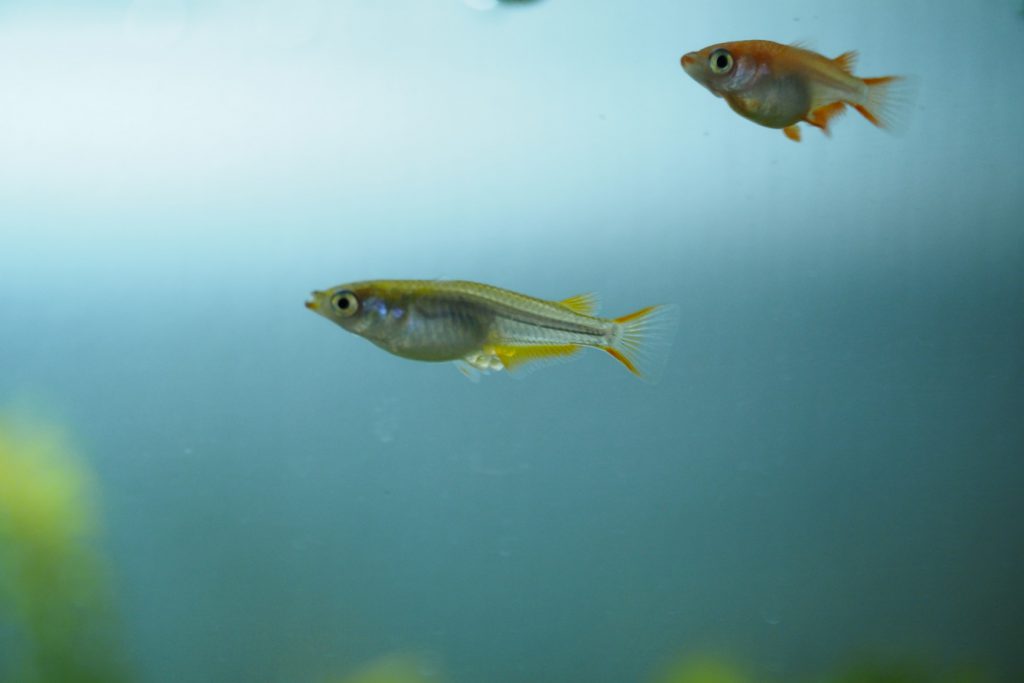
Once you have identified a female killifish swimming with eggs attached to her belly like this, you should immediately prepare an aquarium for the fry. An aquarium can be any container that can hold a lot of water. My friend keeps her killifish in a wardrobe case.
This is the container in which we raise killifish eggs and fry. It is just a planter with a drainage hole. The volume of water is about 13 liters, which is about the same as a 30cm tank.
Do you have a filter or air pump installed?
No filters are installed. We just connect an air pump (a buzzing machine) to an air stone (a stone that emits air) and feed air (air) into the pump.
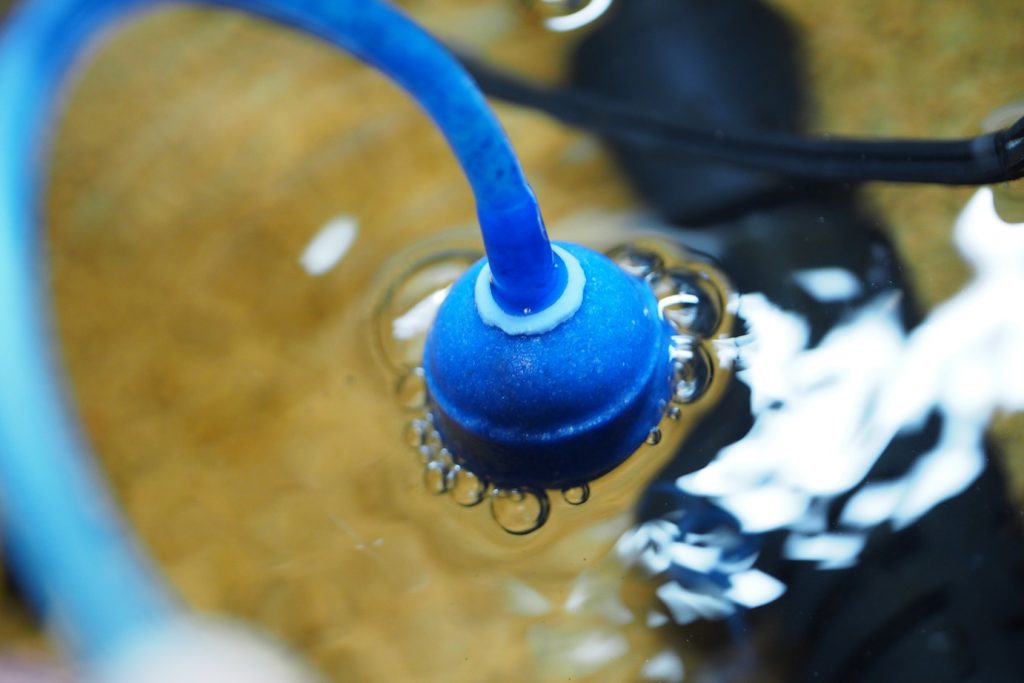
The air pump is called “Suishin SSPP-3S. It is very quiet and the amount of air can be adjusted. It is often cheaper on Amazon than at home centers.
The air volume is too strong as it is, so I connected a three-way branch to this air pump and feed air to three killifish tanks, including this fry tank.
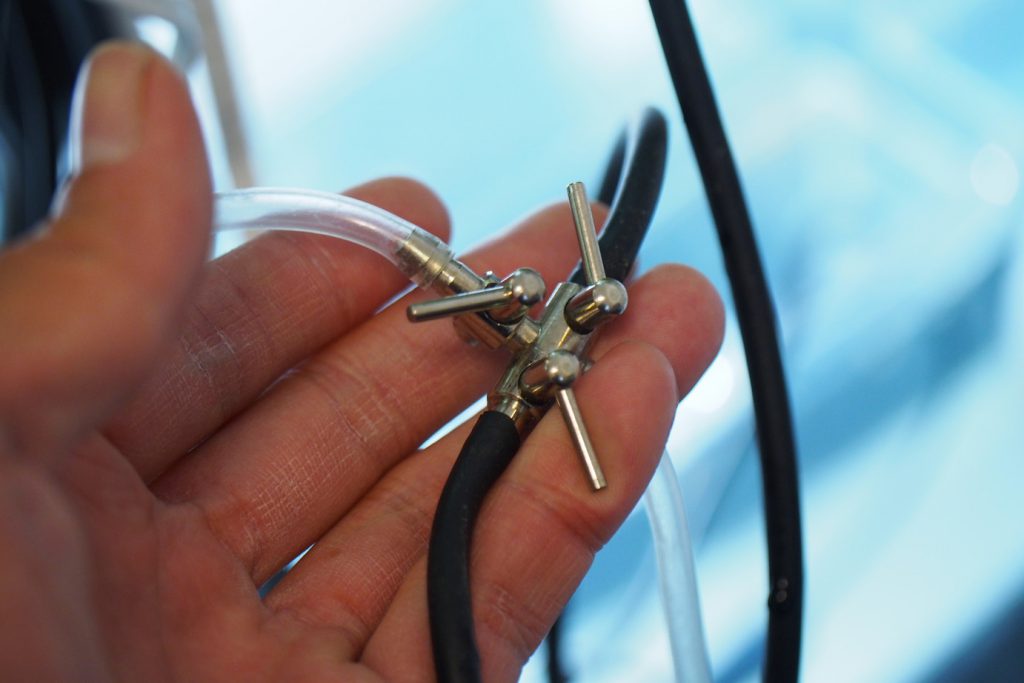
Now the container is ready! Since the filtration function hardly works at this point, we chose gravel with filtration effect for this aquarium. This is also the standard “Kotobuki Kougei Rokajari”.
We use this for all of our aquariums. I like it because it is not only effective in filtration but also looks good. The finer the better it looks, but the grains are smaller and a little harder to handle.

Killifish have hatched! What to feed them?
Medaka eggs hatch approximately 7 to 14 days after spawning. The higher the water temperature, the faster the hatching process. It is said that killifish eggs hatch at an accumulated temperature of 250°C (for example, 10 days at 25°C).
We believe that the common saying, “You don’t need to feed them for the first few days after birth,” is incorrect. Even newborns are healthy and eat well. Here we introduce the feeding method and recommended food for fry.
There are many different types of food, but you can just grind up food for adult killifish.
Professional killifish breeders cultivate elephant bugs, and recently there are special foods for killifish fry available, but if you grind adult killifish food, they will grow without any problems.
This food can be finely mashed with a finger and spreads well and floats well, making it ideal for feeding fry. We use this food for all of our killifish.
What are the methods of egg collection for killifish?
There are two main methods of egg collection: The first is direct egg collection. The first method is to collect the eggs directly from the killifish, which can be easily done by scooping the eggs with a net and dabbing them with your fingers. However, the netting method is very stressful for killifish.
The second method is to set up a spawning bed or water plants as a spawning site and collect the eggs laid there. This method does not cause stress to killifish, but it is less efficient.
How often should they be fed?
When killifish fry are born, their internal organs are not fully developed, and unlike adults, they will die if they do not eat for a few days. Feed your fry as often as possible. You want to feed them at least three times a day.
Also, the water quality will naturally deteriorate as the frequency and quantity of feeding increases. If you increase the amount of food or the frequency of feeding, be sure to change the water more often.
What about water changes? We don’t change the water in our fry tank.
The other thing we are concerned about is water changes. In the container I mentioned earlier, we have not changed the water for about two months, but the fry are growing without any problems.
As I explained earlier, newborn fry are very weak. A sudden change in water temperature and quality can be damaging to the fry.
As long as you make sure that there is plenty of water (20 liters or more is a good rule of thumb) and take care not to leave food in the water (e.g., by sucking it out with a dropper), it is possible to create an environment in which fry can grow properly without water changes by simply adding more water.
Related Articles
This website provides information on how to keep killifish.
Please take a look at our other articles.
Ecology and biological and morphological characteristics of medakaStandard Japanese Names: northern medaka, southern m[…]
Egg-laying season for killifish in a natural environment is from May to OctoberWhen kept outdoors or without a heater,[…]
Conditions for killifish to spawnFirst, let's keep in mind the conditions for killifish to spawn.When the killifis[…]
Medaka keeping is easy even for kids once you get the hang of it!Medaka are probably the easiest type of fish to keep […]
